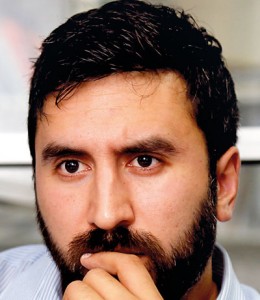Design Sprint, a new process that solves problems in 5 days
View(s):In town late last month was Raomal Perera, a successful Sri Lankan-born entrepreneur based in Ireland with his 27-year old son, Rohan on a mission to guide Sri Lankan companies in a new concept that is transforming start-ups and big corporates: Design sprint.

Rohan Perera

Raomal Perera
This is a five-day process for solving problems and testing new ideas.
A workshop in August that they ran on the new concept on transforming ideas to fruition within a space of five days drew a full house at the Asia Pacific Institute of Information Technology in Colombo, with the support of SLASSCOM where Mr. Perera is also an advisor.
Educated at St. Joseph’s College Colombo, Mr. Perera is an engineer and serial entrepreneur turned educator. He founded Irish software company Network365 (later renamed Valista). He became an Adjunct Professor at INSEAD in 2007 and started his third venture, Lean Disruptor in 2015.
In a recent interview with the Business Times, both Mr. Perera and son Rohan, shared their thoughts on the new business process that helps design ideas within a space of five days:
Raomal Perera:
“It has been an interesting journey because Rohan was born in Ireland and into the Internet generation. The way he thinks would be very different to the way I think and looking back at the four years (that we have worked together) I have found that having him and giving him the responsibility to drive the business, has dramatically increased our business.
“As a professor of entrepreneurship I say to myself that you have to often talk about the importance of diversity. The challenge with diversity is being able to accept people and give them the responsibility even if they think very differently from you.
“There was a time when I was creating my business that I used to always say I wish I could make a clone of myself. But now in hindsight I’m saying … well actually you don’t want another ‘you’; what you really want is somebody who is able to challenge you and look at things from that perspective.
Rohan Perera:
“On a trip to Dubai two years ago, I came across this book called ‘Sprint’ by Jake Knapp. I was blown away by the book. It was incredible and we needed to use this process to help people. The book is about design thinking – more of a time-box of fast-based design thinking to force outcomes; it’s about taking this deadline-driven approach to achieve what seems impossible.
“Here, we get away from the Internet, we turn off mobile phones and we try to build prototypes of ideas, we think and we map out some of these ideas, we build them and map them.
“We reached out to Jake and we went to workshops and went to the first facilitators workshop hosted by Jake. I persuaded my dad to come for the next workshop and we went to the second one in Berlin.
“Last August we ran a Sprint in Ireland and since then we have been evangelising this process in Ireland. We were in Sri Lanka in November 2017 and ran a couple of workshops and some introductory sessions and in one we had 80 people.
“One good example: SLACK is the online messaging platform. The problem was about re-arranging your inbox when it gets clogged. Most of the time these are internal emails from office and then SLACK created a platform where you can message to a SLAK-created group. This process saw 48 per cent less emails. It didn’t clutter your emails or your inbox.
When SLACK started this they found that a lot of the people from the tech-based and tech community bought into that idea. But they also found that lot of non-tech companies didn’t buy into this. So they decided to run a Sprint. The question to be answered was – how do we show the value of this product to the non-tech community? They decided to design a platform so that the non-tech users see value in it. They tossed a few ideas some of which would have taken months to develop, and then other ideas – this was where Sprint came handy.
The main concept of design sprint is ‘together alone’ – instead of all of – we might have ideas – meet in a room and share the ideas. In a sprint everyone gets their voices heard. Everyone’s ideas are on the wall and all of them are anonymous – from the loudest to the quietest.
In the SLACKS case, within two years they had four million data active users.
Design Sprint is like a peek into the future as to what your ideas will look like. Especially for a start-up who might not have the money to spend and would take risks – this is a fast forward way of finding out what your customers like. It became hugely successful from that and then large organisations began seeing the value – like for example you want to invest a lot of money on a product but instead of taking that big risk, you want to test it first. So Design Sprint is a way to mitigate that risk.
Raomal Perera:
A mix of companies from large to small came for the Sri Lanka workshop. We see this trend also in the US. Earlier it was the small companies who went to these disruptor conferences but now the big companies, having realised the value are also trying to understand some of these processors which have dramatically helped start-ups.
(Feizal)


